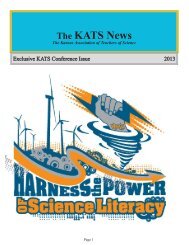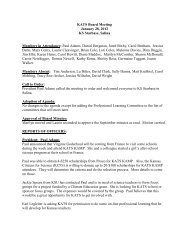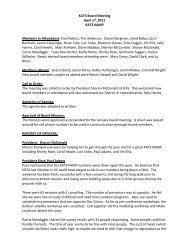You also want an ePaper? Increase the reach of your titles
YUMPU automatically turns print PDFs into web optimized ePapers that Google loves.
Wan Hu, Sixteenth Century<br />
According to legend Wan Hu, a Chinese stargazer and local official<br />
living sometime around the middle of the Ming dynasty, dreamed<br />
of spaceflight. He constructed a chair and attached 47 gunpowder<br />
<strong>rocket</strong>s to its base. In some versions of the story, his chair also<br />
had kite wings. On launch day, 47 assistants rushed up and<br />
simultaneously lit the fuses of all the <strong>rocket</strong>s. A huge explosion<br />
followed. When the smoke cleared, Wan Hu was gone. Some have<br />
suggested Wan Hu actually made it into space, and you can see him<br />
as the “Man in the Moon.” Regardless of the actual end, Wan Hu<br />
had the right idea—use <strong>rocket</strong>s to travel into space.<br />
Rockets Go to War<br />
For centuries to come, <strong>rocket</strong>s competed with cannons as the<br />
weapon of choice for war. Each technological development<br />
moved one or the other system into or out of favor. Cannons were<br />
more accurate. Rockets could be fired more quickly. Breechloading<br />
cannons speeded up the firing. Rocket fins increased<br />
accuracy. Cannons had greater range. Rockets had greater<br />
range. And so on. Invention abounded. Invented by Joanes<br />
de Fontana of Italy (1420), a surface-running <strong>rocket</strong> torpedo was<br />
supposed to set enemy ships on fire.<br />
Kazimierz Siemienowicz, c. 1600 to c. 1651<br />
Kazimierz Siemienowicz, a Polish-Lithuanian commander in the Polish Royal<br />
Artillery, was an expert in the fields of artillery and <strong>rocket</strong>ry. He wrote a<br />
manuscript on <strong>rocket</strong>ry that was partially published before his death. In Artis<br />
Magnae Artilleriae pars prima, he published a design for multistage <strong>rocket</strong>s<br />
that was to become a fundamental <strong>rocket</strong> technology for <strong>rocket</strong>s heading<br />
for outer space. Siemienowicz also proposed batteries for military <strong>rocket</strong><br />
launching and delta-wing stabilizers to replace the guiding rods currently in<br />
use with military <strong>rocket</strong>s. It was rumored that Siemienowicz was killed by<br />
members of guilds that were opposed to him publishing their secrets, and<br />
they hid or destroyed the remaining parts of his manuscript.<br />
The Birth of Rocket Science<br />
Galileo Galilei, 1564 to 1642<br />
In addition to his many other accomplishments, this Italian astronomer<br />
and mathematician rekindled the spirit of scientific experimentation<br />
and challenged old beliefs relating to mass and gravity. He proved<br />
that an object in motion does not need the continuous application<br />
of force to keep moving. He called this property of matter, which<br />
causes it to resist changes in velocity, “inertia.” Inertia is one of the<br />
fundamental properties that Isaac Newton would later incorporate into<br />
his laws of motion.<br />
3










